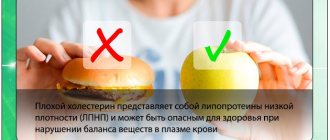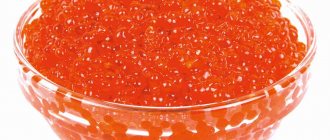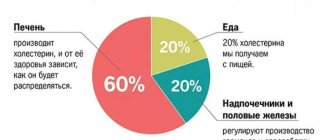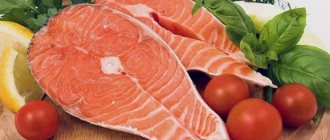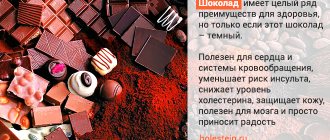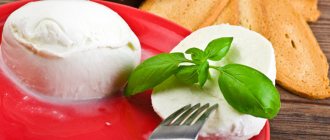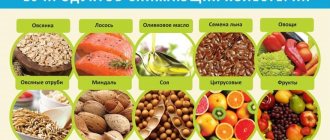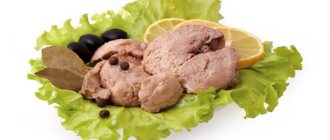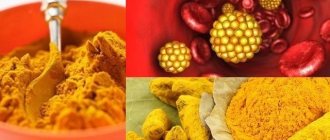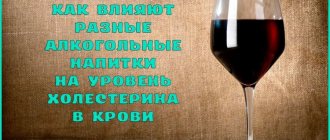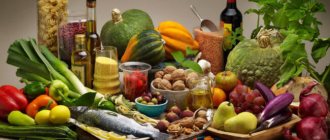At the end of the 20th and beginning of the 21st centuries, diseases of the cardiovascular system acquired the nature of a pandemic, being the main cause of disability and death in the population of economically developed countries. The main role in circulatory disorders in arterial vessels belongs to atherosclerosis.
Atherosclerosis is a chronic disease of the arteries that occurs as a result of lipid metabolism disorders and is accompanied by the deposition of cholesterol and its “bad” fractions in the vessel wall. Deposits form atherosclerotic (cholesterol) plaques on the walls of blood vessels. The subsequent growth of connective tissue in them (sclerosis), and calcification (calcium deposition) of the vessel wall lead to deformation and narrowing of the lumen until complete blockage.
When the arteries supplying the heart are damaged, a phenomenon called angina pectoris (chest pain) occurs and, as a result, acute myocardial infarction may develop.
Damage to the arteries supplying the brain causes either a transient (micro-stroke) or persistent (stroke) disturbance of cerebral circulation. Deposition of cholesterol in the arteries of the extremities is the cause of the development of lameness, pain in the calf during exercise, and gangrene of the extremity. Atherosclerosis of the abdominal arteries leads to intestinal ischemia and gangrene. Possible narrowing of the renal arteries due to the accumulation of cholesterol leads to a pronounced increase in blood pressure.
General rules
Elevated blood cholesterol levels are a risk factor for atherosclerosis.
This fat-like substance is necessary for the formation of enzymes, hormones and other things. However, when its metabolism is disrupted and its level in the blood is high, irreversible changes develop in the wall of blood vessels - atherosclerosis, which is dangerous for its complications (heart attack, stroke, disruption of the blood supply to various organs).
Dangerous in terms of the development of atherosclerosis is considered to be an imbalance between fractions - low-density lipoproteins LDL and high-density lipoproteins (HDL). The former have an atherogenic effect and their high content is a risk of cardiovascular diseases. High-density (“good”) cholesterol is produced by the body. Moderate physical activity promotes its production and at the same time reduces the accumulation of harmful substances, which only comes from foods.
Nutritional therapy has been developed to reduce cholesterol levels. A diet for lowering blood cholesterol levels can be used in the treatment and prevention of diseases - it is suitable for people who monitor their health. Its goal is to improve lipid metabolism and weight loss. The main principle of this diet is the reduction of animal fat, which we get from meat, fatty dairy products, and simple carbohydrates. Polyunsaturated fats (their sources are vegetable oils and nuts), fiber and complex carbohydrates (we get them from vegetables, grains, bran) should predominate in the diet. It is the large amount of fiber that helps remove excess cholesterol from the gastrointestinal tract. The protein content in this therapeutic diet is within normal limits, and can be obtained by consuming a variety of legumes and lean meats.
The amount of bread is no more than 200 g per day; the use of dietary bran bread is also allowed. Salt and the amount of liquid consumed are limited to 1.2 liters. Dishes must be prepared without salt, but it is allowed to add salt to prepared food on the table. Vegetables are eaten raw or stewed, and it is better to boil (bake) meat and fish to reduce fat in the diet. It is important to eat plenty of vegetables at dinner. Daily calorie content is 1400-1500 kcal.
Basic principles of nutrition for high blood cholesterol:
- Grains, vegetables and fruits, containing complex carbohydrates and high amounts of fiber, should make up about 60% of the diet. You need to eat 400 g of vegetables daily (one third fresh) and 200 g of grain products.
- The predominance of vegetable oils in the diet.
- Moderate consumption of permitted dairy products.
- Diet for high blood cholesterol includes fish, chicken and turkey, which are the foods of choice, and lean beef should take second place in the diet.
- The amount of salt is minimal.
- 2-3 eggs per week (unlimited protein).
- Avoid feeling hungry (have fruit snacks on time).
The diet for high cholesterol in women is no different from that for men and the general principles of nutrition remain the same. Total cholesterol in women and men should be no more than 5.2 mmol/l; a figure of 6.19 mmol/l is already considered significantly increased. HDL in women should be at least 0.9 mmol/l and up to 1.9 mmol/l; in men this figure is different - from 0.7 to 1.7 mmol/l.
The onset of menopause has an adverse effect on cholesterol metabolism and is explained by the fact that with the onset of menopause, estrogen synthesis decreases, and it regulates the production of “good” cholesterol. The increase in “bad” is facilitated by a woman’s sedentary lifestyle, overeating and consumption of fatty and high-calorie foods.
Diet for women with high cholesterol should contain as much as possible plant foods rich in phytosterols, which control and reduce the level of bad cholesterol:
- wheat germ;
- sesame seeds;
- sunflower seeds;
- flax seed;
- olive oil;
- grape seed oil;
- avocado.
Vegetables and fruits containing pectin are no less useful: apples, citrus fruits, beets, watermelons and natural vegetable juices. Remember that all purple and red fruits and vegetables contain polyphenols that stimulate the production of good cholesterol: blueberries, strawberries, raspberries, cranberries, cranberry juice, chokeberries, lingonberries, pomegranate, purple and red grapes, plums, eggplants. Green leafy salads and vegetables are also useful: cabbage, lettuce, spinach, sorrel, artichoke and parsley, dill and green onions available to everyone.
It is imperative to include legumes in your diet, which, due to their high fiber content, will remove harmful cholesterol from the intestines. In terms of protein content, they can replace meat.
It is beneficial for older women to consume soy products containing phytoestrogens. Do not forget about proper culinary processing of meat and fish - a minimum of fat when cooking - it is best to bake in the oven, in pots or steamed.
Considering women's craving for sweets, it will be very difficult to give up sweet cream products, chocolate and sweets, pastries, cookies, waffles and limit yourself in sugar. But this must be done. Fatty meat should also disappear from the diet; you will have to give up processed meat (sausage, boiled pork). Pork, lard and bacon are prohibited. Don't forget about the need for physical activity. All this will only bring benefits - your tests will normalize, your weight will drop, and you will consider yourself attractive.
High cholesterol is often observed in diseases of the internal organs and endocrine system: nephritis, hypothyroidism, obesity, diabetes mellitus. This combined pathology requires a special approach to nutrition and more serious treatment. In each case, the issue is resolved individually and therapeutic nutrition is prescribed for the underlying disease. For example, what diet is indicated for high cholesterol due to kidney disease? In this case, you need to follow Table No. 7 and its variations. Diet 7 is prescribed for chronic kidney disease and, in addition to limiting salt and the amount of liquid you drink, it involves excluding foods rich in cholesterol (kidneys, liver, egg yolks, brains).
Risk factors for the development of atherosclerosis
- hypertension (systolic blood pressure >140 mm Hg, diastolic blood pressure >90 mm Hg),
- alcohol abuse,
- smoking (the most dangerous factor),
- sedentary lifestyle,
- unhealthy diet
- hereditary predisposition,
- obesity,
- increased cholesterol in the blood (total cholesterol >5 mmol/l, “bad” cholesterol >3 mmol/l, a-cholesterol >50 mg/dl,
- diabetes,
- emotional overstrain.
Such a high probability of atherosclerosis requires timely provision of therapeutic and preventive assistance, because it is known that a person’s age is determined by the state of his vascular bed. In the popular scientific literature devoted to the problem of atherosclerosis, the expression “ cleansing of blood vessels ” is used. Although not a medical term, “ vascular cleansing ” defines a number of extremely relevant measures for the prevention and treatment of atherosclerosis:
- healthy lifestyle and prevention of atherosclerotic process in blood vessels,
- stabilization of the course of atherosclerosis in the presence of its clinical manifestations through pharmacological agents,
- surgical restoration of vascular patency in cases of severe manifestations of atherosclerosis.
Authorized Products
Proper nutrition for high cholesterol should become the norm. What should it be? First of all, you need to exclude meat broths - prepare vegetarian soups; if this is difficult and unusual for you, then you can use weak secondary broth for first courses and carefully skim off the fat. Use potatoes in minimal quantities and it is better to prepare combined vegetable soups, cabbage soup and borscht.
Cabbage for high cholesterol Meat and poultry should be taken of lean types, poultry skin is unacceptable, additional fat should be trimmed from meat. Since the diet involves limiting fat, the meat should be boiled or baked without adding sour cream, mayonnaise or any fat. Use vegetables as a side dish, not cereal. It is better to cook them for breakfast (oatmeal, buckwheat and brown rice).
Cabbage (all types), carrots, zucchini, pumpkin, eggplant, or salads made from fresh vegetables and green peas will help lower cholesterol levels. The total amount of vegetables eaten per day is at least 400g.
Use virgin vegetable oils to season ready-made dishes. Flaxseed oil, a leader in the content of omega-3 fatty acids, which regulate the production of beneficial lipids, is useful in this regard.
Lowering cholesterol levels can be achieved by introducing low-fat sea fish into the diet, but the consumption of meat (chicken) should still be limited to once a week. When it comes to fish, you should choose dietary varieties: hake, haddock, blue whiting, navaga, pollock, pollock.
Bread made from rye, grain flour and bran is allowed. You can use yeast-free bread (with bran, with flax seeds) for snacks and first courses. Milk and fermented milk products are allowed only in low fat content and in limited quantities. Green tea and weak coffee with milk and without sugar, vegetable and fruit juices without sugar are allowed.
Surgical methods for restoring blood flow (cleaning blood vessels)
Surgical methods of cleaning blood vessels are used for clinically pronounced manifestations of vascular insufficiency. In case of damage to the abdominal aorta and arteries of the lower extremities, the indications are:
- reducing the distance of pain-free walking to less than 200 meters,
- pain in the foot at rest,
- development of trophic ulcers and peripheral gangrene.
Surgical cleaning of blood vessels involves: removal of blood clots from the lumen of the artery, elimination of plaques narrowing or clogging the lumen of the vessel, the so-called endarterectomy. If it is impossible to locally remove obstacles in the lumen of the vessel, a new roundabout blood circulation path is created (bypass surgery).
Currently, surgeons have in their arsenal new, progressive methods of restoring or improving blood circulation in vessels, using X-ray endovascular interventions, during which it is possible to expand the lumen of the vessel (balloon plasty) and install a device to prevent narrowing of the vessel in the plasty area (stenting).
The problem of atherosclerosis cannot be eliminated by using any one method, even the most modern one. Treatment and prevention of atherosclerosis are complex and constant, with mandatory monitoring of their effectiveness.
Table of permitted products
| Proteins, g | Fats, g | Carbohydrates, g | Calories, kcal | |
| Vegetables and greens | ||||
| eggplant | 1,2 | 0,1 | 4,5 | 24 |
| beans | 6,0 | 0,1 | 8,5 | 57 |
| zucchini | 0,6 | 0,3 | 4,6 | 24 |
| cabbage | 1,8 | 0,1 | 4,7 | 27 |
| broccoli | 3,0 | 0,4 | 5,2 | 28 |
| Brussels sprouts | 4,8 | 0,0 | 8,0 | 43 |
| cauliflower | 2,5 | 0,3 | 5,4 | 30 |
| green onion | 1,3 | 0,0 | 4,6 | 19 |
| bulb onions | 1,4 | 0,0 | 10,4 | 41 |
| carrot | 1,3 | 0,1 | 6,9 | 32 |
| cucumbers | 0,8 | 0,1 | 2,8 | 15 |
| squash | 0,6 | 0,1 | 4,3 | 19 |
| salad pepper | 1,3 | 0,0 | 5,3 | 27 |
| parsley | 3,7 | 0,4 | 7,6 | 47 |
| salad | 1,2 | 0,3 | 1,3 | 12 |
| beet | 1,5 | 0,1 | 8,8 | 40 |
| celery | 0,9 | 0,1 | 2,1 | 12 |
| soybeans | 34,9 | 17,3 | 17,3 | 381 |
| asparagus | 1,9 | 0,1 | 3,1 | 20 |
| tomatoes | 0,6 | 0,2 | 4,2 | 20 |
| Jerusalem artichoke | 2,1 | 0,1 | 12,8 | 61 |
| pumpkin | 1,3 | 0,3 | 7,7 | 28 |
| dill | 2,5 | 0,5 | 6,3 | 38 |
| beans | 7,8 | 0,5 | 21,5 | 123 |
| garlic | 6,5 | 0,5 | 29,9 | 143 |
| lentils | 24,0 | 1,5 | 42,7 | 284 |
| Fruits | ||||
| avocado | 2,0 | 20,0 | 7,4 | 208 |
| oranges | 0,9 | 0,2 | 8,1 | 36 |
| pomegranate | 0,9 | 0,0 | 13,9 | 52 |
| grapefruit | 0,7 | 0,2 | 6,5 | 29 |
| pears | 0,4 | 0,3 | 10,9 | 42 |
| lemons | 0,9 | 0,1 | 3,0 | 16 |
| mango | 0,5 | 0,3 | 11,5 | 67 |
| tangerines | 0,8 | 0,2 | 7,5 | 33 |
| nectarine | 0,9 | 0,2 | 11,8 | 48 |
| peaches | 0,9 | 0,1 | 11,3 | 46 |
| apples | 0,4 | 0,4 | 9,8 | 47 |
| Berries | ||||
| gooseberry | 0,7 | 0,2 | 12,0 | 43 |
| Red currants | 0,6 | 0,2 | 7,7 | 43 |
| black currant | 1,0 | 0,4 | 7,3 | 44 |
| Nuts and dried fruits | ||||
| nuts | 15,0 | 40,0 | 20,0 | 500 |
| almond | 18,6 | 57,7 | 16,2 | 645 |
| flax seeds | 18,3 | 42,2 | 28,9 | 534 |
| fenugreek seeds | 23,0 | 6,4 | 58,3 | 323 |
| sunflower seeds | 20,7 | 52,9 | 3,4 | 578 |
| Cereals and porridges | ||||
| buckwheat (kernel) | 12,6 | 3,3 | 62,1 | 313 |
| oat groats | 12,3 | 6,1 | 59,5 | 342 |
| cereals | 11,9 | 7,2 | 69,3 | 366 |
| wheat bran | 15,1 | 3,8 | 53,6 | 296 |
| Raw materials and seasonings | ||||
| basil | 2,5 | 0,6 | 4,3 | 27 |
| honey | 0,8 | 0,0 | 81,5 | 329 |
| Dairy | ||||
| kefir 0% | 3,0 | 0,1 | 3,8 | 30 |
| kefir 1% | 2,8 | 1,0 | 4,0 | 40 |
| Cheeses and cottage cheese | ||||
| cottage cheese 0.6% (low fat) | 18,0 | 0,6 | 1,8 | 88 |
| curd tofu | 8,1 | 4,2 | 0,6 | 73 |
| Meat products | ||||
| beef | 18,9 | 19,4 | 0,0 | 187 |
| Bird | ||||
| chicken fillet | 23,1 | 1,2 | 0,0 | 110 |
| turkey | 19,2 | 0,7 | 0,0 | 84 |
| Eggs | ||||
| eggs | 12,7 | 10,9 | 0,7 | 157 |
| Fish and seafood | ||||
| fish | 18,5 | 4,9 | 0,0 | 136 |
| seaweed | 0,8 | 5,1 | 0,0 | 49 |
| Oils and fats | ||||
| grape seed oil | 0,0 | 99,9 | 0,0 | 899 |
| linseed oil | 0,0 | 99,8 | 0,0 | 898 |
| olive oil | 0,0 | 99,8 | 0,0 | 898 |
| sunflower oil | 0,0 | 99,9 | 0,0 | 899 |
| Non-alcoholic drinks | ||||
| mineral water | 0,0 | 0,0 | 0,0 | — |
| instant chicory | 0,1 | 0,0 | 2,8 | 11 |
| green tea | 0,0 | 0,0 | 0,0 | — |
* data is per 100 g of product
How to determine if there are cholesterol plaques
Before cleaning blood vessels from cholesterol plaques and blood clots, you need to find out whether they are there or not. If the lipid profile shows the risk of plaque formation, the coagulogram shows the risk of thrombus formation, then instrumental studies will help to detect immediate “congestion” in the vessels:
- A special type of ultrasound is color duplex scanning. In this way it is very convenient to examine the arterial and venous vessels of the upper and lower extremities, the aorta, vessels going to the brain and those that nourish the retina;
- Triplex scanning is another option for ultrasound. It is used to examine the vessels of the brain and the arteries that supply it - those located outside the cranial cavity;
- The most accurate research method is angiography. It is used to clarify the location of plaques/thrombi in the vessels of the extremities that were identified during duplex or triplex scanning, as well as to determine blood clots/plaques in those organs that cannot be seen during ultrasound examination.
Fully or partially limited products
Excluded: pork, cooking fats, refined vegetable oil, margarine, butter, duck and goose meat, offal (kidneys, brains, liver), sausages and smoked meats. Fatty fish, fish roe (contains a large amount of cholesterol), crayfish, shrimp, crabs and any canned fish, including cod liver, are prohibited.
You should not consume puff pastry and pastry products, highly extractive meat, fish, or mushroom broths. Cream, fatty cottage cheese and sour cream are not allowed in the diet. Prohibition of consumption of chocolate, full-fat ice cream, products with cream and products with palm and coconut oil. Mayonnaise and ketchup should not be used as sauces.
Limit:
- beef (1-2 times a week);
- red fish;
- egg yolks;
- potato;
- fatty cheeses;
- nuts;
- buckwheat;
- honey.
Cleansing with surgery
You can start cleaning with the help of traditional medicine recipes, or adjusting your diet, and also for more complex pathologies in the blood vessels of the heart, you need to turn to drug therapy, and apply surgical cleansing:
- Transluminal angioplasty of coronary vessels . This is a method of inserting a balloon into the vascular lumen. With the help of this balloon, the lumen expands and does not interfere with normal blood flow in the coronary arteries. This method is minimally invasive;
- Aortic-coronary bypass surgery . This is the construction of a bypass highway in the bloodstream at the site of development of an atherosclerotic plaque. The blood begins to circulate along the bypass channel, and its movement returns to normal. With restored blood supply, the performance of the heart organ is improved. The operation is performed to prevent the development of coronary insufficiency and myocardial infarction in systemic atherosclerosis.
- Minimally invasive stenting method . Through a puncture on the femoral artery, a stent is inserted into the coronary artery, which expands the arterial lumen and, with the help of a mesh, prevents it from narrowing and rupturing;
- Cleaning the vessels of the heart organ using laser therapy . The laser eliminates hypoxia of the heart organ and coronary vessels and improves blood flow in them. Using a laser beam, atherosclerotic deposits on the arteries of the heart are cleared. With this method of cleansing the cardiovascular system, there is a minimal amount of negative impact on the body. Laser therapy of cardiac vessels can be used at any age, even in old age.
Coronary artery bypass surgery
Table of prohibited products
| Proteins, g | Fats, g | Carbohydrates, g | Calories, kcal | |
| Fruits | ||||
| bananas | 1,5 | 0,2 | 21,8 | 95 |
| Nuts and dried fruits | ||||
| raisin | 2,9 | 0,6 | 66,0 | 264 |
| Cereals and porridges | ||||
| semolina | 10,3 | 1,0 | 73,3 | 328 |
| white rice | 6,7 | 0,7 | 78,9 | 344 |
| Flour and pasta | ||||
| pasta | 10,4 | 1,1 | 69,7 | 337 |
| Bakery products | ||||
| bagels | 16,0 | 1,0 | 70,0 | 336 |
| bagels | 16,0 | 1,0 | 70,0 | 336 |
| crackers | 11,2 | 1,4 | 72,2 | 331 |
| Confectionery | ||||
| jam | 0,3 | 0,2 | 63,0 | 263 |
| jam | 0,3 | 0,1 | 56,0 | 238 |
| candies | 4,3 | 19,8 | 67,5 | 453 |
| pastry cream | 0,2 | 26,0 | 16,5 | 300 |
| Ice cream | ||||
| ice cream | 3,7 | 6,9 | 22,1 | 189 |
| Cakes | ||||
| cake | 4,4 | 23,4 | 45,2 | 407 |
| Chocolate | ||||
| chocolate | 5,4 | 35,3 | 56,5 | 544 |
| Raw materials and seasonings | ||||
| ketchup | 1,8 | 1,0 | 22,2 | 93 |
| mayonnaise | 2,4 | 67,0 | 3,9 | 627 |
| Dairy | ||||
| cream | 2,8 | 20,0 | 3,7 | 205 |
| sour cream 30% | 2,4 | 30,0 | 3,1 | 294 |
| sour cream 40% (fat) | 2,4 | 40,0 | 2,6 | 381 |
| Cheeses and cottage cheese | ||||
| cheese | 24,1 | 29,5 | 0,3 | 363 |
| cottage cheese 18% (fat) | 14,0 | 18,0 | 2,8 | 232 |
| Meat products | ||||
| pork | 16,0 | 21,6 | 0,0 | 259 |
| pork liver | 18,8 | 3,6 | 0,0 | 108 |
| pork kidneys | 13,0 | 3,1 | 0,0 | 80 |
| pork fat | 1,4 | 92,8 | 0,0 | 841 |
| salo | 2,4 | 89,0 | 0,0 | 797 |
| beef liver | 17,4 | 3,1 | 0,0 | 98 |
| beef kidneys | 12,5 | 1,8 | 0,0 | 66 |
| beef brains | 9,5 | 9,5 | 0,0 | 124 |
| mutton | 15,6 | 16,3 | 0,0 | 209 |
| Sausages | ||||
| smoked sausage | 16,2 | 44,6 | 0,0 | 466 |
| smoked sausage | 9,9 | 63,2 | 0,3 | 608 |
| sausages | 10,1 | 31,6 | 1,9 | 332 |
| sausages | 12,3 | 25,3 | 0,0 | 277 |
| Bird | ||||
| smoked chicken | 27,5 | 8,2 | 0,0 | 184 |
| duck | 16,5 | 61,2 | 0,0 | 346 |
| smoked duck | 19,0 | 28,4 | 0,0 | 337 |
| goose | 16,1 | 33,3 | 0,0 | 364 |
| Fish and seafood | ||||
| smoked fish | 26,8 | 9,9 | 0,0 | 196 |
| salted fish | 19,2 | 2,0 | 0,0 | 190 |
| Red caviar | 32,0 | 15,0 | 0,0 | 263 |
| black caviar | 28,0 | 9,7 | 0,0 | 203 |
| squid | 21,2 | 2,8 | 2,0 | 122 |
| shrimps | 22,0 | 1,0 | 0,0 | 97 |
| salmon | 19,8 | 6,3 | 0,0 | 142 |
| sturgeon | 16,4 | 10,9 | 0,0 | 163 |
| canned fish | 17,5 | 2,0 | 0,0 | 88 |
| semi-finished fish products | 12,5 | 6,7 | 14,7 | 209 |
| sardine | 20,6 | 9,6 | — | 169 |
| mackerel | 18,0 | 13,2 | 0,0 | 191 |
| cod (liver in oil) | 4,2 | 65,7 | 1,2 | 613 |
| boiled oysters | 14,0 | 3,0 | — | 95 |
| fresh oysters | 14,0 | 6,0 | 0,3 | 95 |
| Oils and fats | ||||
| butter | 0,5 | 82,5 | 0,8 | 748 |
| creamy margarine | 0,5 | 82,0 | 0,0 | 745 |
| coconut oil | 0,0 | 99,9 | 0,0 | 899 |
| palm oil | 0,0 | 99,9 | 0,0 | 899 |
| rendered beef fat | 0,0 | 99,7 | 0,0 | 897 |
| cooking fat | 0,0 | 99,7 | 0,0 | 897 |
| rendered pork fat | 0,0 | 99,6 | 0,0 | 896 |
| Non-alcoholic drinks | ||||
| cola | 0,0 | 0,0 | 10,4 | 42 |
| lemonade | 0,0 | 0,0 | 6,4 | 26 |
| Pepsi | 0,0 | 0,0 | 8,7 | 38 |
| sprite | 0,1 | 0,0 | 7,0 | 29 |
*data is per 100 g of product
Indications and contraindications
Cleaning procedures can be carried out if there are prescriptions from the treating doctor and there are no pathologies that may be contraindications:
| Indications for cleaning | Contraindications for performing vascular cleansing |
| Constant pain in the head, as well as severe dizziness. | Pregnancy and breastfeeding. |
| Pathology obesity or sudden weight gain. | The patient's age is up to 15 years. |
| Decreased activity, apathetic and depressive state, rapid fatigue of the body and decreased ability to work. | Pathologies of the body's excretory system in the acute stage. |
| Low resistance in the body. | Recurrence of pathologies in the digestive organs. |
| Slow metabolic processes that are triggered by improper blood flow. | Intolerance to components prescribed for cleaning the arteries of the heart. |
| Constant sleepiness. | Disturbances in the hemostasis system, which affects the viscosity of plasma blood. |
| Constant infectious and viral pathologies in the body, irritability of the nervous system. | The period before surgery or after surgical intervention in the body. |
Menu (Power Mode)
The cholesterol diet menu is designed for 5 meals a day. Since you should not allow yourself to feel hungry during the day or in the evening, you are allowed to eat an apple, grapefruit, carrots or drink a fermented milk product. A sample menu for several days might look like this:
First option
| Breakfast |
|
| Lunch |
|
| Dinner |
|
| Afternoon snack |
|
| Dinner |
|
Second option
| Breakfast |
|
| Lunch |
|
| Dinner |
|
| Afternoon snack |
|
| Dinner |
|
Third option
| Breakfast |
|
| Lunch |
|
| Dinner |
|
| Afternoon snack |
|
| Dinner |
|
Below is a table of low-cholesterol foods that can be included in your diet.
| Products name | Featured | Prohibited |
| Fish | Lean sea fish (hake, blue whiting, pollock, navaga, pollock, haddock) and pike three times a week. | Salmon, mackerel, sardine, eel, mackerel, herring, oysters, caviar, shrimp, prepared fish, river fish in limited quantities. |
| Eggs | Up to 3 pieces per week. | Egg yolk. |
| Fats | Sunflower, corn, olive or soybean oils, up to 2 tablespoons per day. | Lard, margarine, palm and coconut oil, butter, animal fat. |
| Meat | Veal, rabbit, turkey, chicken, lean beef once or twice a week. The bird is allowed without skin. | Pork, fatty beef, fatty lamb, duck and goose meat, sausages, liver, kidneys, brain pates, sausages, sausages. |
| Dairy | Skim milk, low-fat kefir, yogurt, cheeses up to 20%, low-fat cottage cheese. | Full-fat cottage cheese, sour cream, cream, ice cream, curd mass, condensed milk, processed cheese. |
| Vegetables | Fresh and frozen, corn and beans. | Potatoes and potato snacks. |
| Fruits | Everything except banana and grapes, as well as dried fruits. | Sugared fruits, pistachios and peanuts, hazelnuts. |
| Cereals | Whole grain bread, brown rice, oatmeal, whole grain pasta. | White rice, semolina, limit buckwheat. |
| Bakery | Oatmeal cookies, bread rolls, dry cookies, “Fitness” cookies. | Biscuits, pastries, rolls, cakes, puff pastry products. |
| Sweets | Low-fat puddings, jellies without added sugar, fruit ice cream. | Chocolate, pastry cream, toffee, marmalade, pastille, sugar, syrups. |
| Beverages | Sugar-free juices, green tea, weak coffee, still mineral water. | Cocoa with milk, coffee with cream, alcoholic and sweet carbonated drinks. |
Rules for cleansing
Cleaning of the heart vessels using medications or folk remedies should be performed strictly according to the rules:
- Cleaning should be carried out only as prescribed by the attending doctor , based on the diagnosis of the state of arterial clogging and the quality of the arterial membranes;
- When cleansing with medications or self-prepared medications , you must strictly adhere to all dosages, and also follow all the doctor’s recommendations regarding the cleansing regimen and the duration of the therapeutic course;
- When using medications based on traditional medicine recipes , it is necessary to take into account in the treatment of heart vessels the pathologies that accompany hypercholesterolemia - in case of pathology, diabetes mellitus, do not use recipes with natural honey, and in case of pathologies of the digestive tract, do not cleanse the vessels with recipes containing garlic and lemon;
- Patients with hypertension or digestive tract disorders should not cleanse with ginger . Ginger is also prohibited during pregnancy and improper blood circulation in the cerebral arteries;
- In combination with dietary nutrition and cleansing with folk remedies, it is necessary to increase the load on the body and activity - visiting the pool, cycling and walking. If the patient has a severe form of hypertension, or diabetes mellitus and severe tachycardia, then you need to limit yourself to walking slowly;
- After carrying out a therapeutic course of treatment , it is necessary to make a complete diagnosis of the heart vessels and compare the results of cleaning.
Cholesterol deposition is the cause of the development of vascular and heart diseases.
